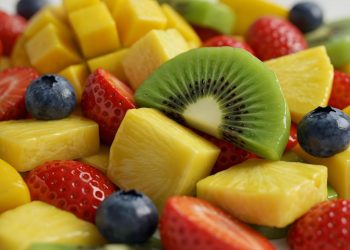Contents
5 Whole Grain Swaps for Stable Blood Sugar Levels
Did you know that nearly 463 million adults worldwide live with diabetes? That’s a staggering statistic, and while there are no magic solutions, making informed dietary choices can significantly improve blood sugar control. One of the best ways to do this is by swapping refined grains for whole grains. Whole grains are packed with nutrients and fiber, which helps stabilize blood sugar levels. So, let’s dive into five effective whole grain swaps that can keep your blood sugar in check!
1. Brown Rice Instead of White Rice
Why It Matters
Brown rice retains its bran and germ, making it a whole grain that’s rich in fiber, vitamins, and minerals. When you consume fiber, it slows down the digestion of carbohydrates, leading to a gradual release of glucose into your bloodstream.
Pros and Cons
- Pros: Higher in nutrients; can improve satiety; better blood sugar control.
- Cons: May take longer to cook; not as fluffy as white rice for some dishes.
Use Case
Next time you’re making a stir-fry, try using brown rice instead of white rice. You’ll find that it not only tastes delicious but also keeps you full longer. Plus, you get that extra fiber boost!
2. Whole Wheat Pasta Instead of Regular Pasta
Why It Matters
Whole wheat pasta is made from whole grain flour, which means it has more fiber and nutrients than regular pasta. According to a study published in the American Journal of Clinical Nutrition, whole grains can lead to lower insulin resistance and better blood sugar control (Slavin, 2013).
Pros and Cons
- Pros: Higher fiber content; more filling; great for pasta salads or casseroles.
- Cons: Slightly denser texture; some may find it has a nuttier flavor.
Use Case
When you’re craving pasta for dinner, opt for whole wheat pasta. Toss it with some sautéed vegetables and a lean protein for a balanced meal that won’t spike your blood sugar.
3. Quinoa Instead of Couscous
Why It Matters
Quinoa is technically a seed but is often treated as a grain. It’s packed with protein, fiber, and essential amino acids, making it an excellent choice for blood sugar stability. It has a low glycemic index, which means it won’t cause rapid spikes in blood sugar.
Pros and Cons
- Pros: Complete protein source; gluten-free; versatile in dishes.
- Cons: Can be more expensive than other grains; some might find it has a unique texture.
Use Case
Try quinoa in place of couscous for a refreshing salad. Mix it with black beans, corn, and a squeeze of lime for a filling dish that’s perfect for meal prep.
4. Oats Instead of Sugary Breakfast Cereals
Why It Matters
Oats are one of the best sources of soluble fiber, particularly beta-glucan, which has been shown to lower cholesterol levels and improve blood sugar control (Tiwari & Cummins, 2013).
Pros and Cons
- Pros: Versatile; keeps you full longer; can be flavored naturally with fruits or nuts.
- Cons: Some may find plain oats bland; cooking time can be longer than instant cereals.
Use Case
Ditch those sugary cereals and opt for a bowl of oatmeal topped with fresh fruits and nuts. Not only will it keep you energized throughout the morning, but it will also help maintain stable blood sugar levels.
5. Barley Instead of Risotto Rice
Why It Matters
Barley has a chewy texture and a nutty flavor, making it an excellent alternative to Arborio rice used in risotto. It’s high in fiber and can help manage blood sugar levels. A study from the Journal of Nutrition found that barley consumption may significantly improve blood glucose control (Slavin, 2013).
Pros and Cons
- Pros: Low glycemic index; high in soluble fiber; great for soups or salads.
- Cons: Takes longer to cook; some may not be familiar with cooking barley.
Use Case
The next time you’re whipping up a risotto, try making it with barley instead. You’ll get a hearty dish that’s not just flavorful but also beneficial for your overall health.
Frequently Asked Questions
1. Can whole grains affect my blood sugar levels?
Absolutely! Whole grains are rich in fiber, which slows down carbohydrate digestion and leads to steadier blood sugar levels compared to refined grains.
2. How do I incorporate more whole grains into my diet?
Start by swapping refined grains in your meals for whole grains. Look for whole-grain bread, pasta, rice, and breakfast cereals.
3. Are whole grains gluten-free?
Not all whole grains are gluten-free. For example, whole wheat contains gluten, while grains like quinoa and brown rice are gluten-free.
4. How can I make whole grains more appealing?
Experiment with herbs, spices, and various cooking methods. Adding sauces, vegetables, or proteins can make whole grains much tastier and more satisfying.
Conclusion
Making simple swaps in your diet can have a profound impact on your blood sugar levels. Whole grains like brown rice, whole wheat pasta, quinoa, oats, and barley not only provide essential nutrients but also help in maintaining stable blood sugar levels.
In today’s fast-paced world, it’s easy to reach for quick, refined options. But, let’s be real: investing a little time in choosing whole grains can lead to healthier choices and better overall well-being.
So, why not give these swaps a try? Your body will thank you!
References
-
Slavin, J. (2013). Whole grains and health: A review of the evidence. American Journal of Clinical Nutrition. Retrieved from https://academic.oup.com/ajcn/article/98/2/539S/4577067
-
Tiwari, U., & Cummins, E. (2013). Effects of dietary fiber on glycaemic control and insulin resistance: A systematic review and meta-analysis. Journal of Nutrition. Retrieved from https://www.ncbi.nlm.nih.gov/pmc/articles/PMC3657371/
-
Mayo Clinic. (n.d.). Nutritional benefits of whole grains. Retrieved from https://www.mayoclinic.org/healthy-lifestyle/nutrition-and-healthy-eating/in-depth/whole-grains/art-20044226
This article is for educational purposes only and is not a substitute for professional medical advice. Always consult a qualified healthcare provider before making changes to your health routine.
Get Your FREE Natural Health Guide!
Subscribe now and receive our exclusive ebook packed with natural health tips, practical wellness advice, and easy lifestyle changes — delivered straight to your inbox.














